This story originally appeared in the Spring 2025 edition of Salmon Steward, the Pacific Salmon Foundation’s quarterly print magazine.
The salmon life cycle is one of nature’s most extraordinary spectacles. Pacific salmon are anadromous, meaning they are born in freshwater, migrate to the ocean and then make the long and arduous return to their natal rivers to spawn before they die.
Yet the migratory nature of salmon is both its greatest marvel and its biggest mystery – this vast journey makes studying salmon survival at different life stages incredibly challenging.
“Salmon survival is like a black box because we can see the salmon leaving, and we can see the salmon coming back, but we can’t see what happens in between when they’re in the ocean,” explains Samantha James, PSF’s Bottlenecks to Survival project manager.
A quarter of a million salmon tagged
In a bid to learn more about salmon survival, the Pacific Salmon Foundation (PSF) and BC Conservation Foundation (BCCF) tagged more than a quarter million Chinook, coho, and steelhead in hatcheries, rivers, estuaries, and in the ocean on eastern Vancouver Island since 2020.
The team uses Passive Integrated Transponder (PIT) tags to follow salmon movement. These chips are similar to those used to keep track of pets or inserted in credit cards.
In freshwater, 26 antenna installations in 11 rivers across Vancouver Island pick up a signal when salmon swim out to sea as juveniles and when they return home as adults.
“I get excited about this project because I feel like we’re finally peeling up the edges of that black box and peering underneath. We’re starting to answer some of those questions around what’s happening to the salmon,” says James.
300,000+ SALMON TAGGED IN 13 RIVERS ON VANCOUVER ISLAND SINCE 2020
- 196,031 CHINOOK
- 175,437 COHO
- 17,108 STEELHEAD
2,500 salmon survivors and counting
Since 2020, the Bottlenecks to Survival project has focused primarily on tagging fish – something that wouldn’t have been possible without the support of DFO, First Nations, community volunteers, and students across Vancouver Island.
Now the focus has shifted to tracking those salmon they tagged as juveniles, as they return to rivers across the Island, including the Cowichan, Nanaimo, Goldstream, Quinsam, Big and Little Qualicum, Puntledge and Englishman.
In 2024, researchers counted 2,500 salmon they tagged up to four years ago return home as adults.
A new dashboard helps visualize in-season results – allowing users to learn about the project and explore the data on salmon returns in individual rivers, as well as age, stock, and species composition: psf.ca/bottlenecks-data.
“The fall is a really exciting time, because we see which fish survived and what made a survivor,” says James. “It’s amazing to see these tagged fish show up and light up our systems all across the east coast of Vancouver Island.”
Nearly two-thirds of the returning fish were traced to Quinsam, Goldstream, and Cowichan Rivers.
Now, PSF and BCCF will dissect the data to determine what makes a salmon survivor. With this information, the team will then be able to direct conservation efforts where salmon need the most help.
With the Bottlenecks to Survival project continuing until 2026, James and team expect to see thousands more tagged salmon return to rivers across Vancouver Island until 2030.
They will also study Chinook migration patterns in the Strait of Georgia, Chinook winter diets and health, and begin investigating interactions of salmon with seals and sea lions in estuaries.
This project is supported by the British Columbia Salmon Restoration and Innovation Fund — a joint program from the Government of Canada and Province of British Columbia (BCSRIF).

 Julian Heavyside
Julian Heavyside